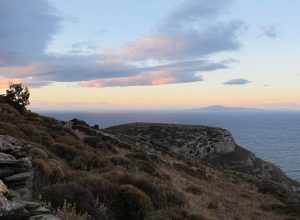
I thought it may be useful to 2014 Zagora Archaeological Project (ZAP) team members who have not yet been to Zagora to get a picture of the site and how the day’s work generally commences. (This year’s excavation season starts next Monday, so many team members will be travelling to Andros this week.)
Breakfast is usually at 5.30am in the Kantouni pensione dining room, with departure for the site in the various Zagora vehicles at 6am. Start times can change according to sunrise time. The aim is to get to Stavropeda, where the vehicles are parked for the day, as the sun is rising, so that team members have enough light to safely walk down the rocky path to Zagora. Safety is ALWAYS the primary consideration. Stavropeda is about a 20-minute drive from the Kantouni at Batsi.
Meg and Lesley compile a list each day which determines which vehicles people will travel in that day. Factors affecting who will travel in which vehicle include what work is required on site and what equipment needs to be transported in the vehicles. One of the vehicles has to go to the Archaeological Museum in Chora at the end of each working day, to take any excavated material there for cleaning, sorting and storing. There are a number of approved drivers assigned to each hire vehicle; Meg and Lesley also decide who will drive each vehicle for the day. There will be a number of vehicles hired during the project, including three mini-vans/people-movers, a 4-wheel-drive vehicle for use on the rougher tracks and two smaller vehicles.
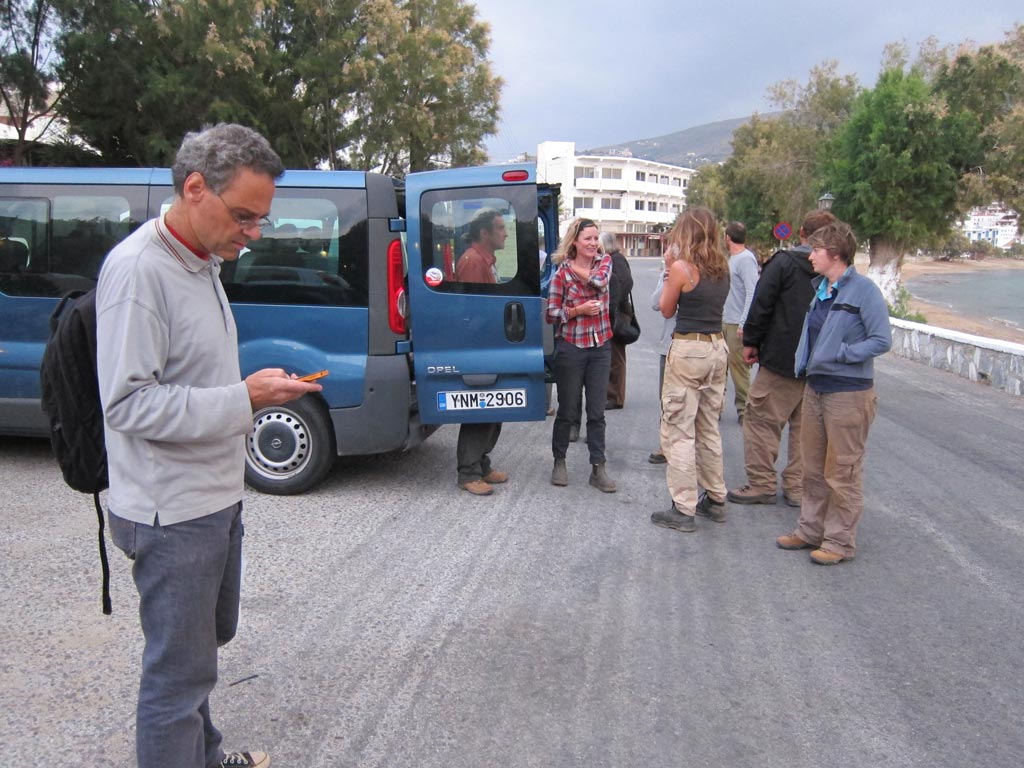
Because Meg and Lesley are so meticulous in organising the travel arrangements, we can all rest assured (even those of us who may take a little longer getting up the hill at the end of the day) that the car will still be waiting for us at Stavropeda when we get there.
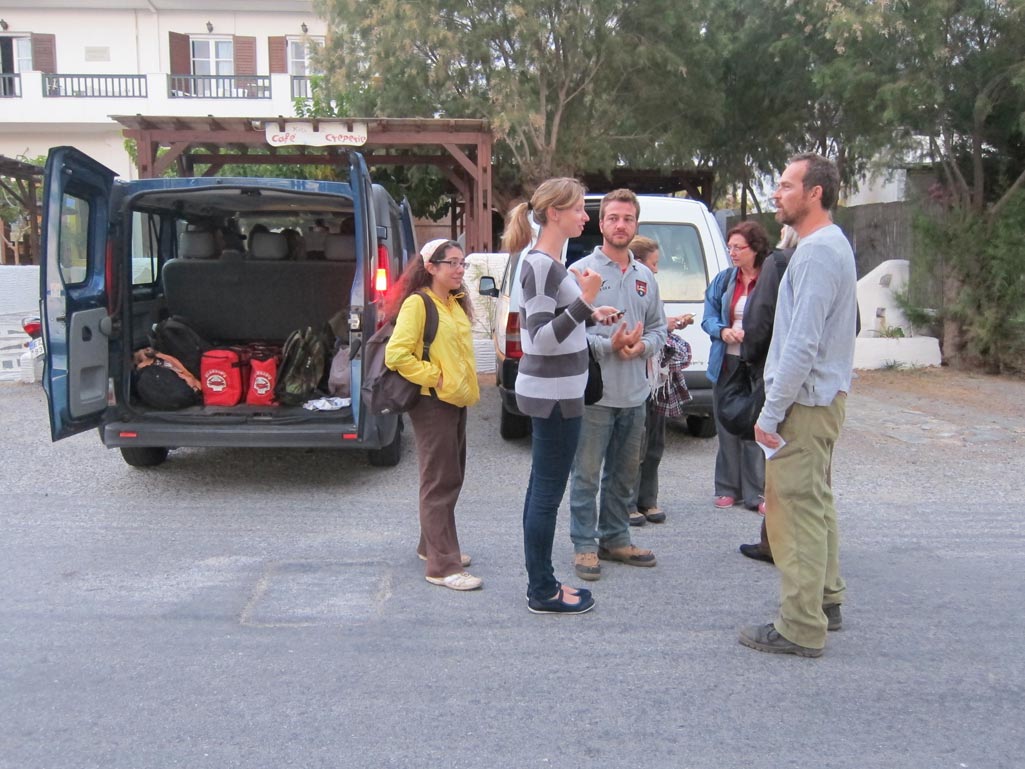
Here are some photographs which show you how work days tend to begin:
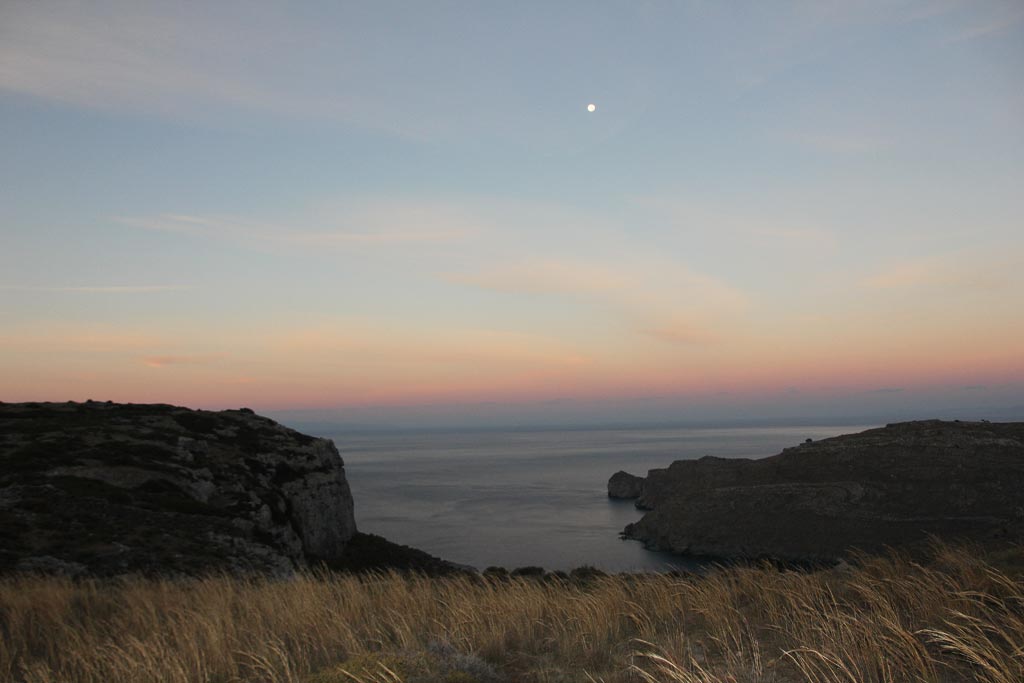
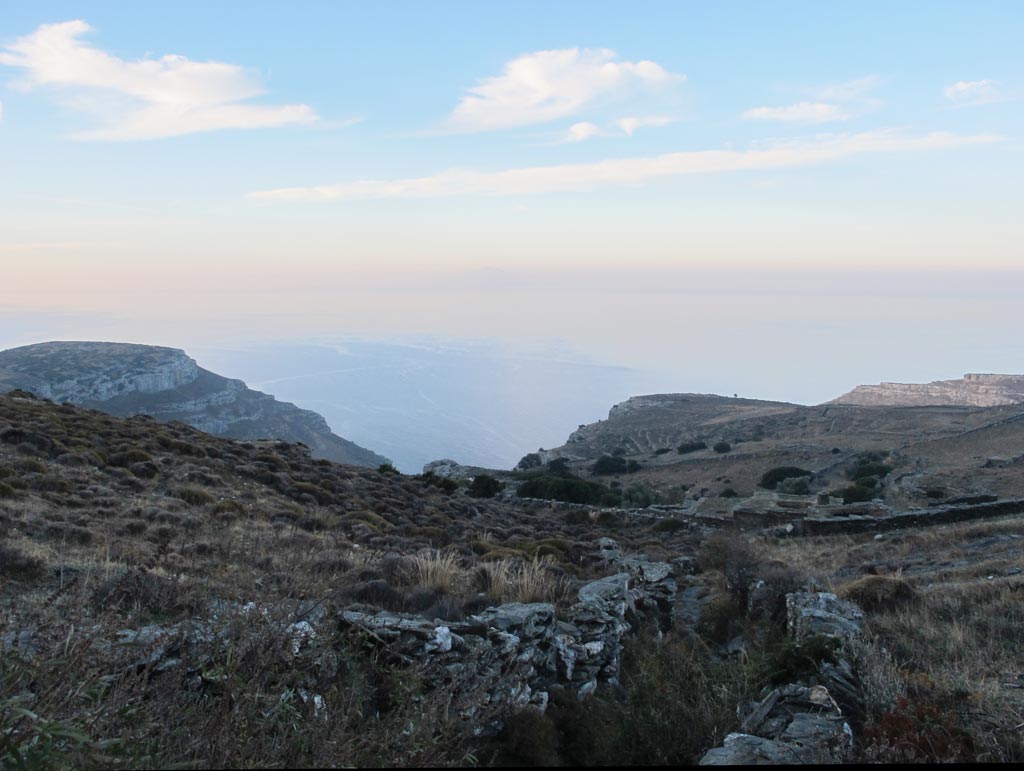
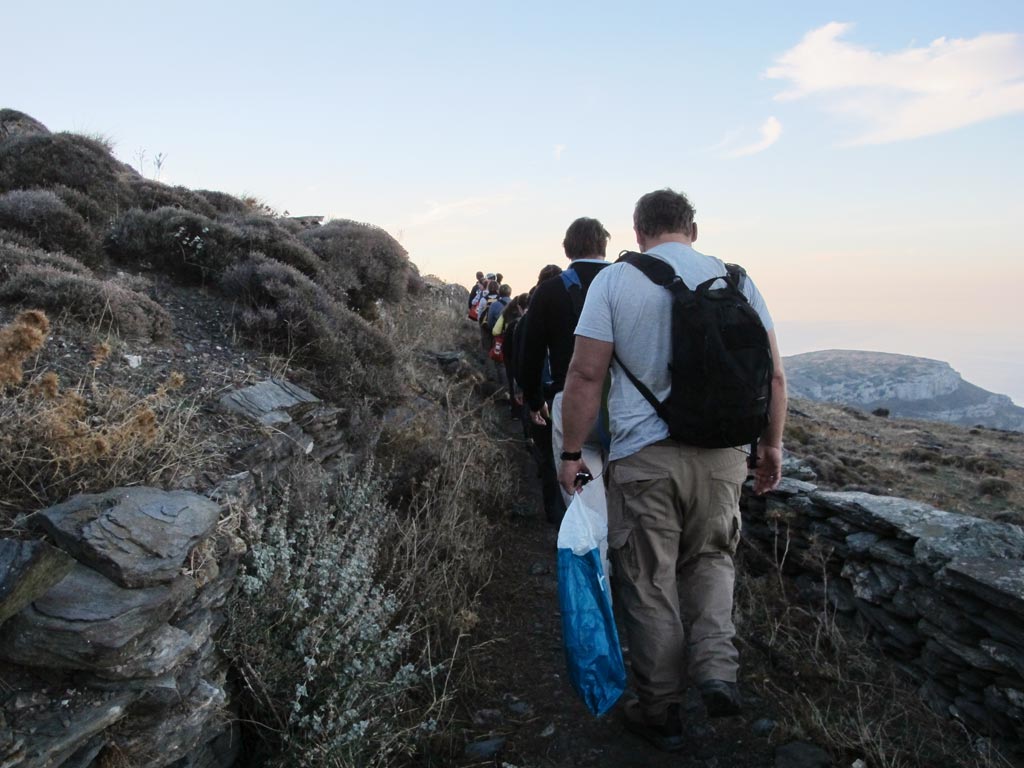
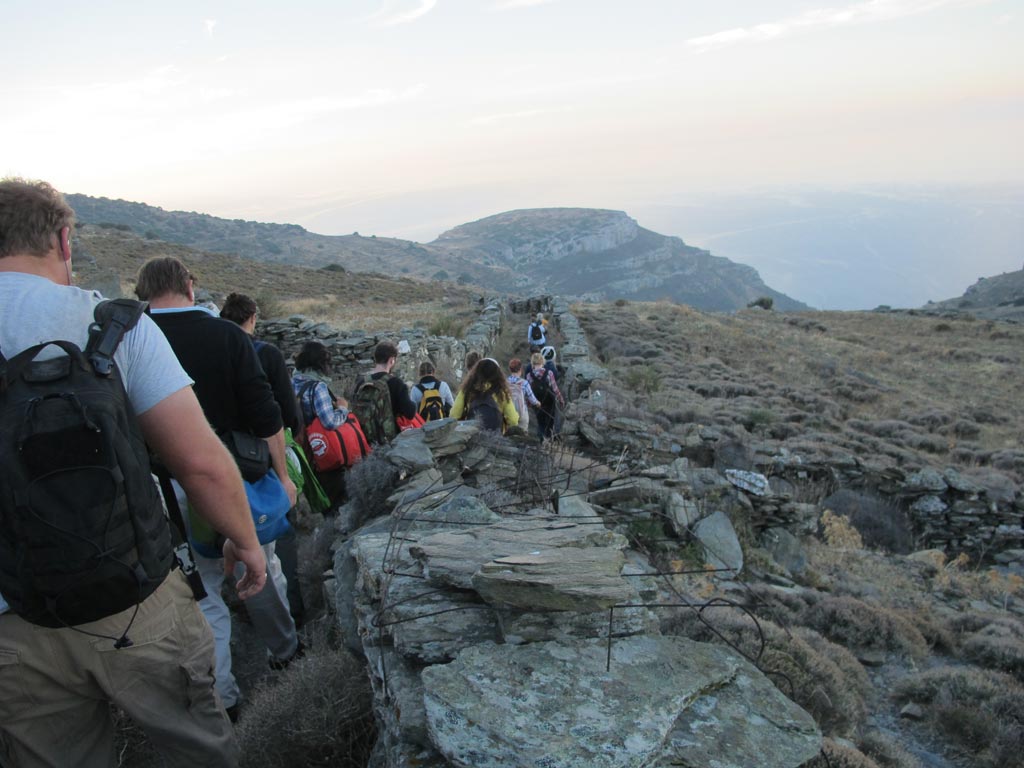
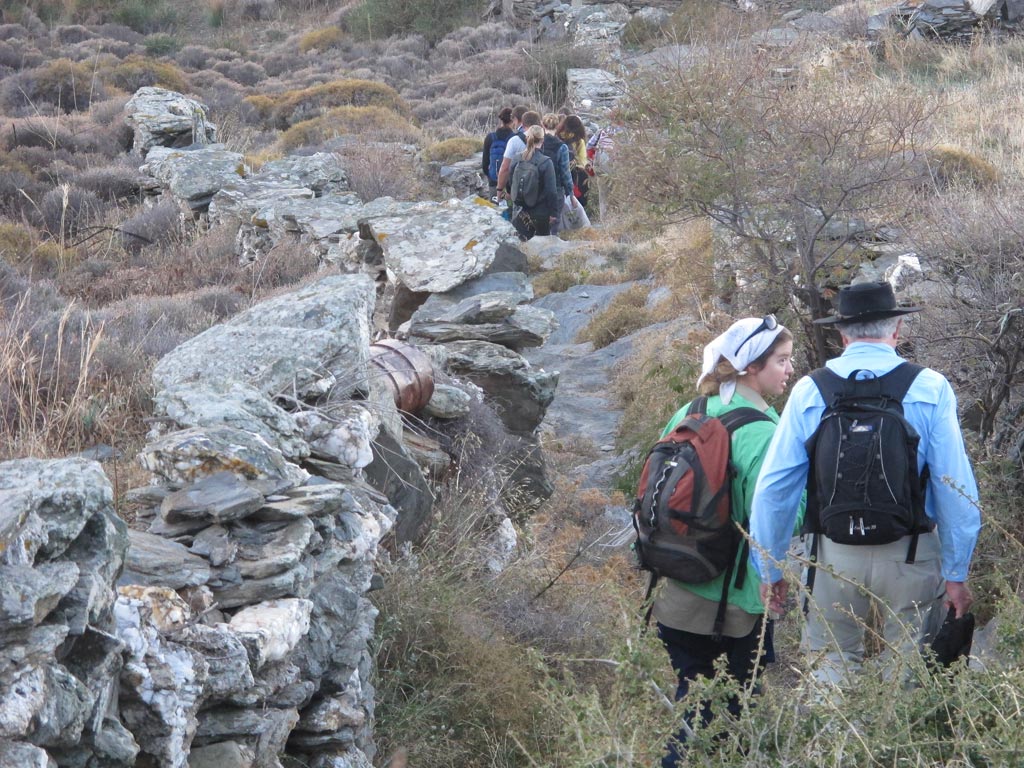
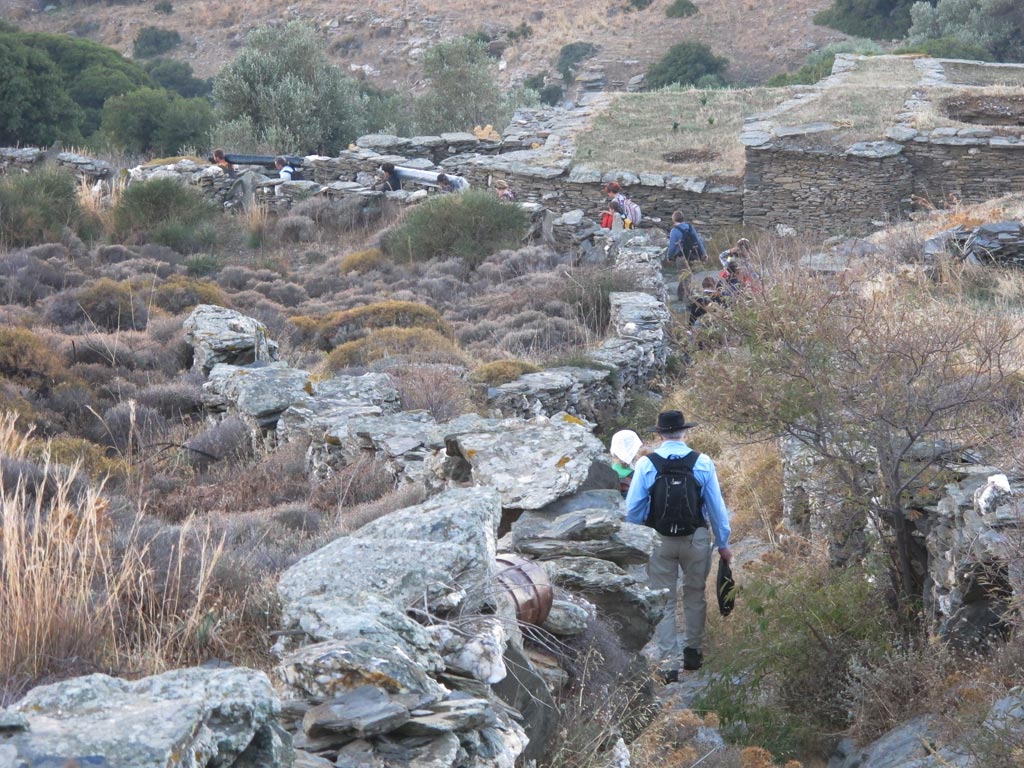
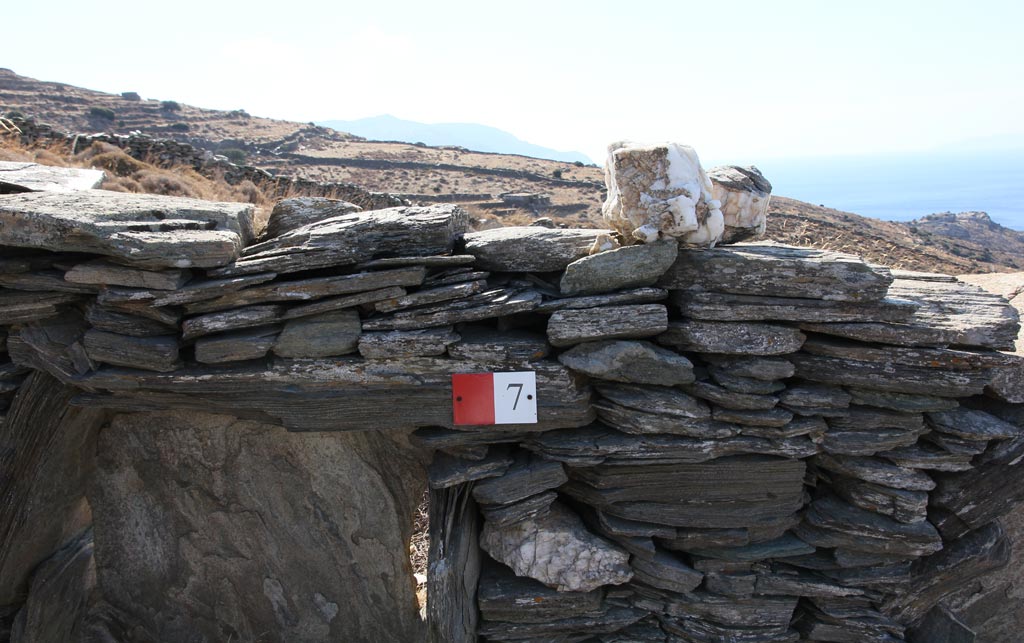
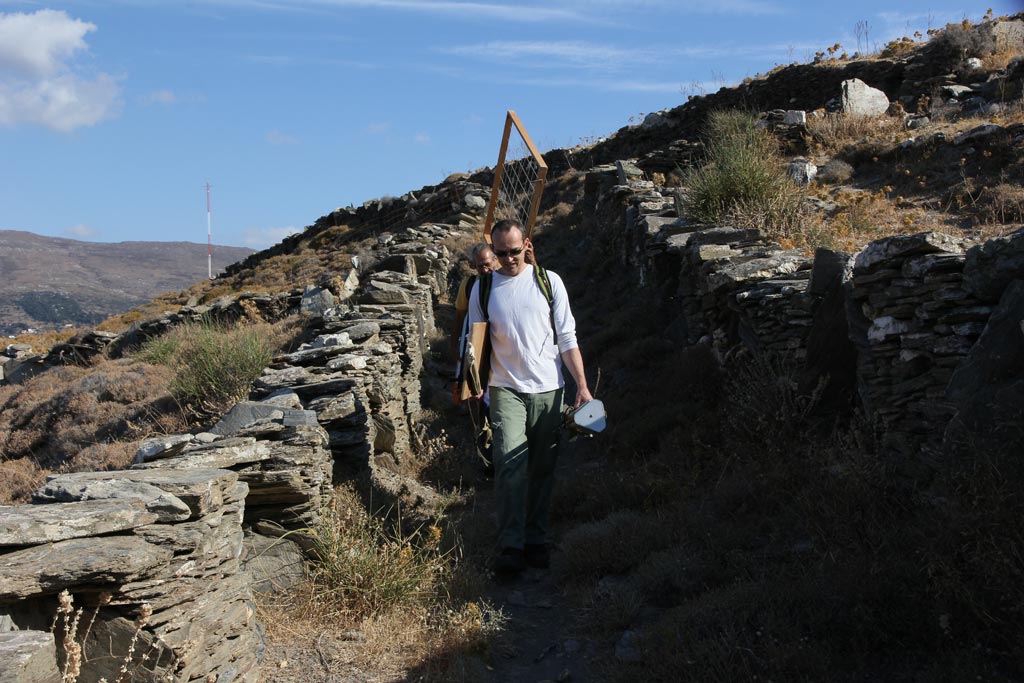
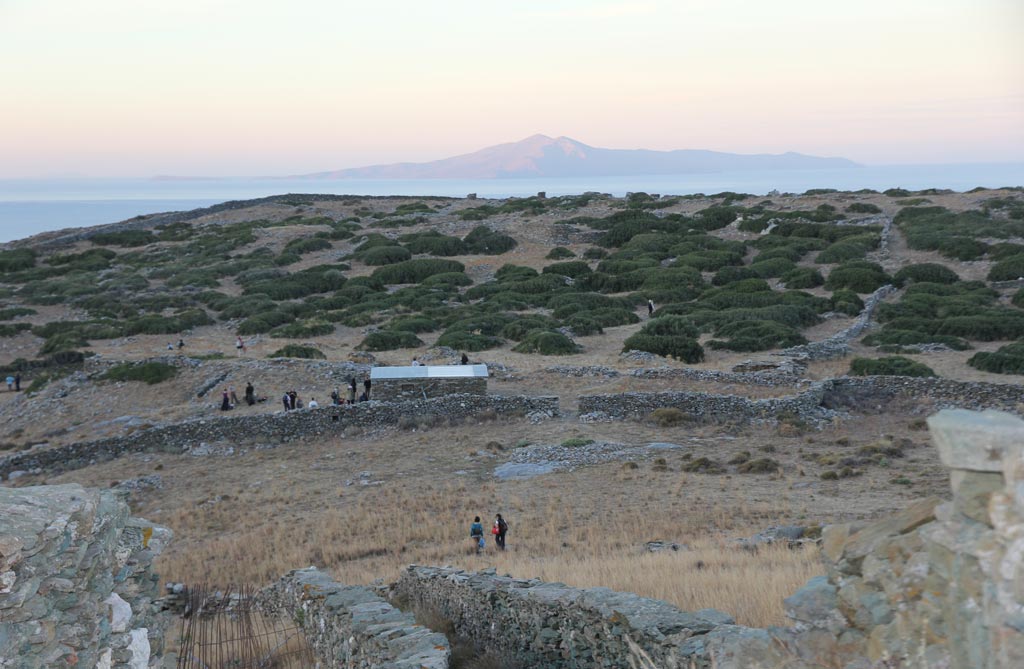
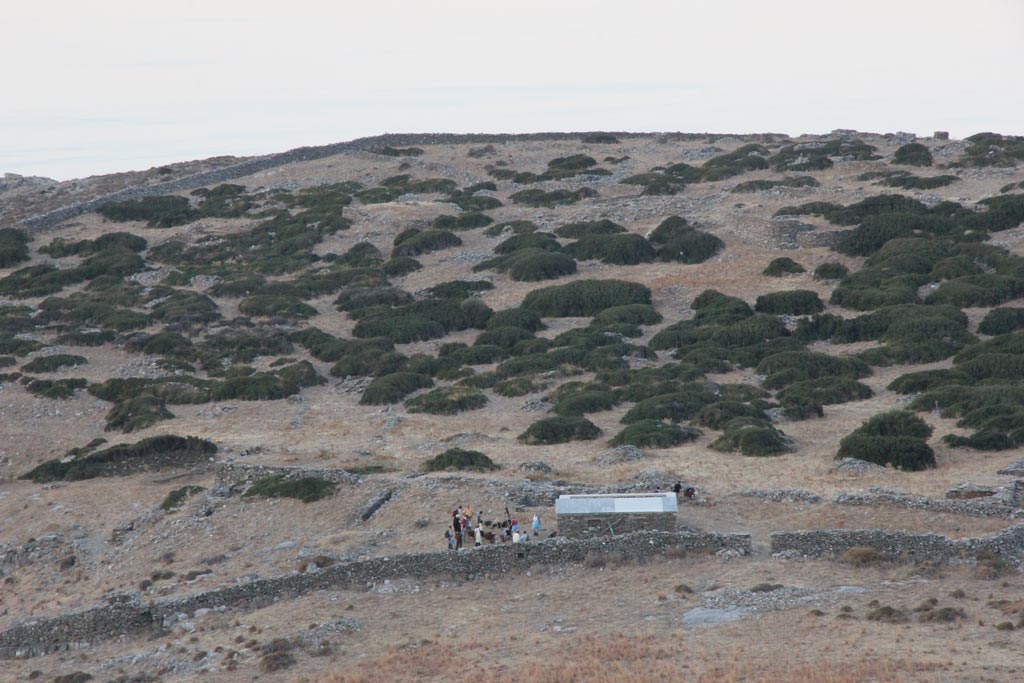
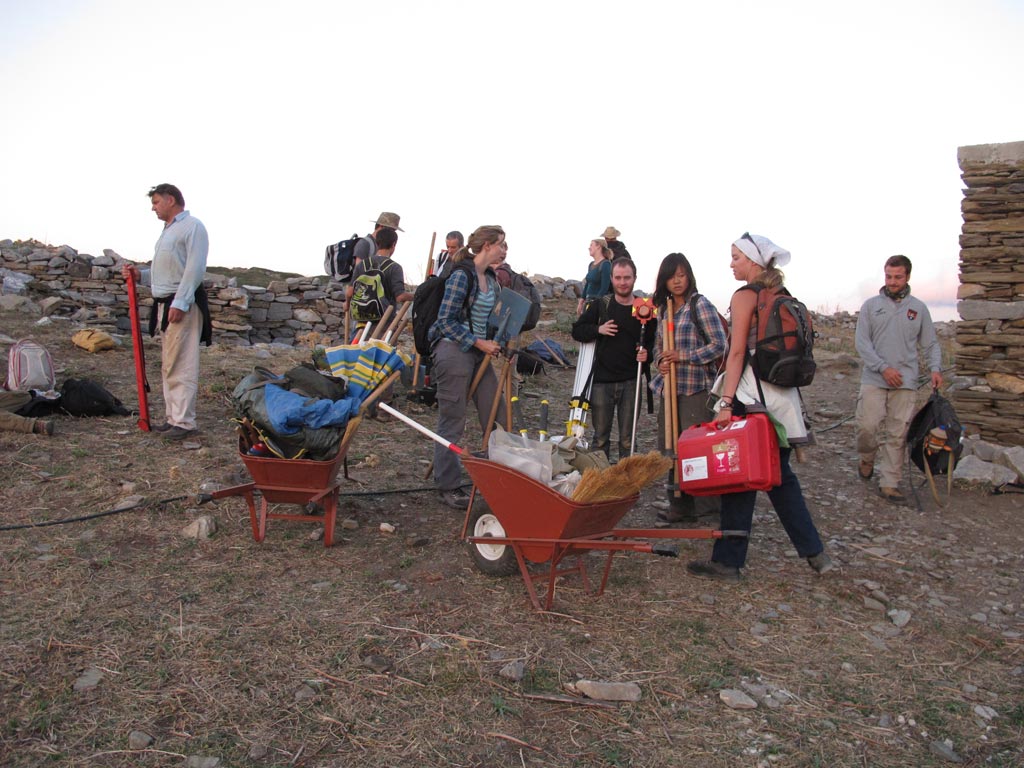
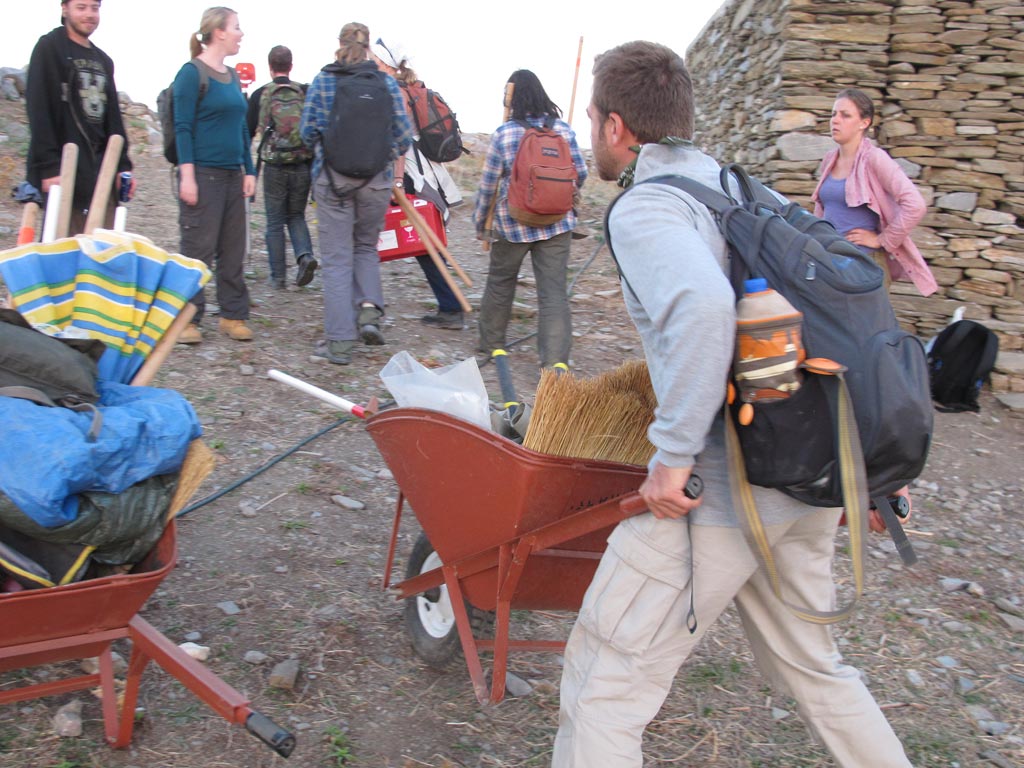
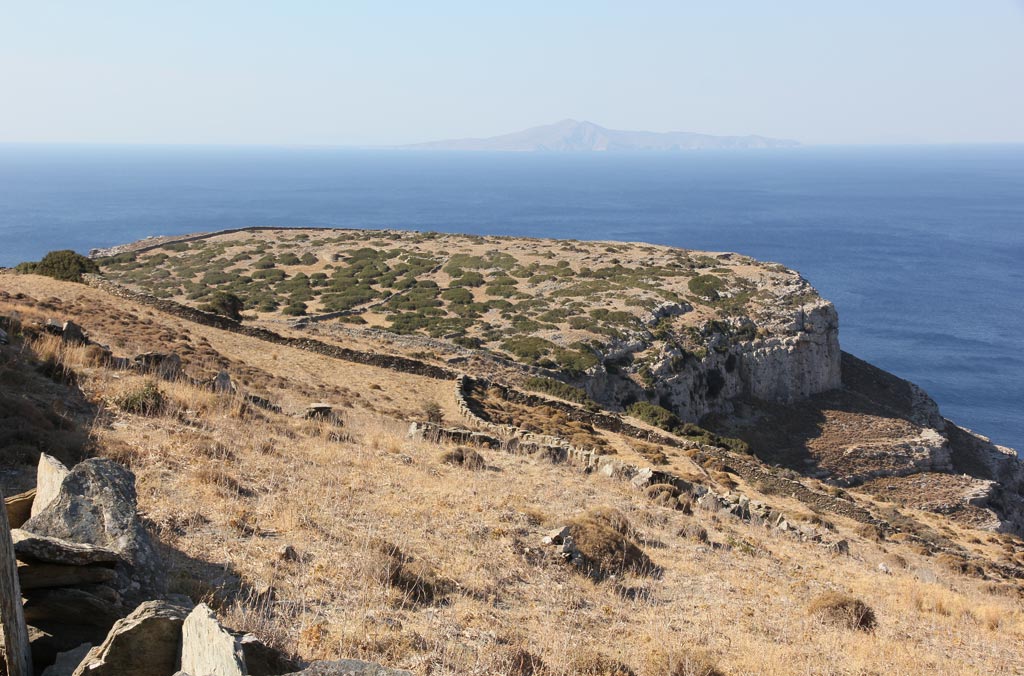


9 thoughts on “An intro to Zagora work mornings”
Excellent article, Irma – many thanks. Bon voyage to all team members travelling to Greece this week! Cheers; Malcolm & Carol
Thanks, Malcolm and Carol. Your kind wishes are much appreciated. The team will enjoy your kind gift of wine at the Kantouni, I’m sure! Cheers, Irma
What a brilliant website and well organised project. With views like that I would love to be there. That is until the weather turns nasty ! Hope it all goes well.
Thanks a lot, Robert – your kind wishes about the project and the website are much appreciated. I will pass them on to the team. The weather can certainly be challenging, with extremes of temperature, wind, humidity and rain. However the challenging weather passes, and it is always exhilarating.
Hi Irma. What wonderful photos! Good luck to you and this year’s team for the season ahead – may the breeze be gentle, the days cool and the finds exciting.
Best wishes
Kate
Hi Kate. So glad you like the photos. I’m sure they bring back fond memories for you. And thanks for your kind wishes – I will pass them on to the team. Cheers, Irma
The joy (and pain) of getting to site are made very clear! The views changing daily, hourly and even by the minute are a wonderful extra dimension to the archaeology.
Fantastic photos as always Irma, takes us right there with you! No doubt you’ll find the team well and in excellent spirits when you arrive soon, all the best for another successful season and look forward to following all the archaeological adventures!
Many thanks, Vanessa. I’m so glad you’re following the blog again and enjoying it. I hope we’ll keep you engaged with ZAP, and look forward to your further comments. All the best.